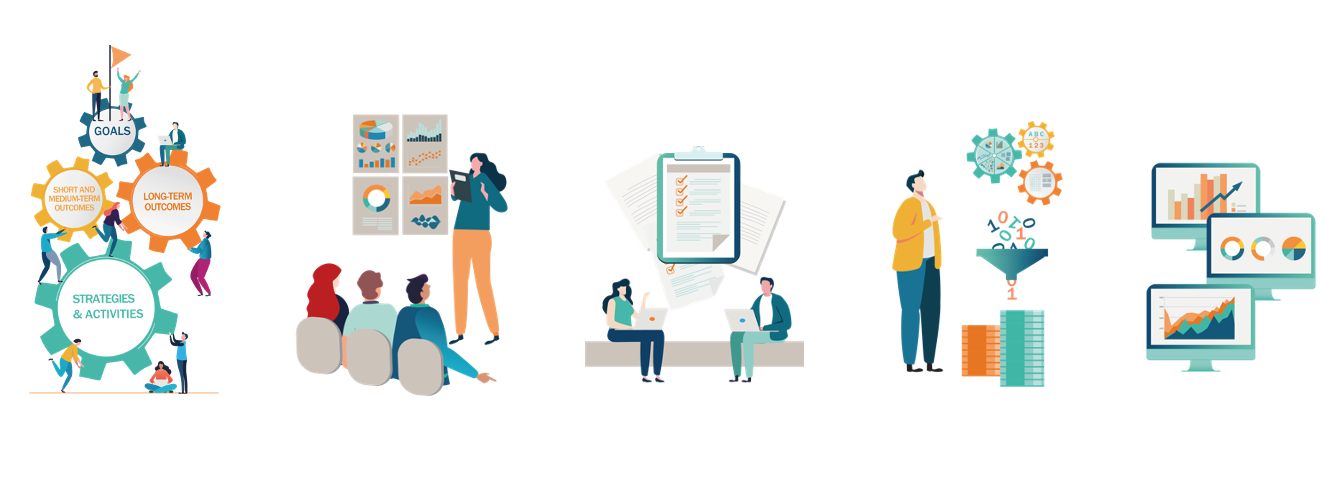
5 Key Learnings on Digitalising Evaluation (on my way out the door!)
December 21, 2021 / Written by Jenny Riley
This month, our Chief Digital Officer Jenny Riley hands over the digital reigns, leaving a legacy of an awesome digital team who will be led by Managing Partner Carina Calzoni. Before taking on her new role of Chief Impact Officer at Our Community, Jenny shares insights from her time building a new business area for Clear Horizon – evaluating digital interventions – learnings which have rapidly become all-too-applicable to anyone working in today’s evaluation and social impact space.
I joined Clear Horizon as something of a “digital disrupter” after my consulting company Navigating Outcomes was acquired. It was a pretty good deal on both sides, with Clear Horizon excited to bring my team with our knowledge and experience of building dashboards for monitoring social impact on board, and my team thrilled to have more resources, access to a bigger team with a great brand name and the chance to do some innovative work with amazing clients. Three years, 30+ digital projects and one global pandemic later, here’s what I’ve learned:
- Digital is 10% technology and 90% people
It sounds like a cliché, but it’s so important and yet usually underestimated. Again and again when evaluating digital projects, we found that the tech was easy, there being no shortage of great developers/designers – it was getting internal staff onboard that was the trick. Supporting staff to adopt new technology means acknowledging loss and fear – you’re asking staff to hand over their expertise and status as the source of wisdom on “how things have always been done”. It takes courage to step into the unknown, and seek real change as opposed to a middle ground mash-up of old and new (which generally results in the worst of both worlds.) Acknowledge that it’s a significant change process, and look after each other.
- Digital is an opportunity to re-imagine solutions
We evaluated a few projects that took existing analogue processes and stuck them straight online. In one instance, the intervention went from being clunky and not particularly user friendly to being even more inaccessible, as users were concerned worried about data safety. The opportunity to start with the challenge the client was trying to solve was missed; instead the organisation took an already existing solution that was not great and put that on-line. The opportunity with digital is the double loop learning; go back to the beginning, look at the specific problem you’re trying to solve, and re-design from there.
- Evaluators and digital experts are from different paradigms and are colliding
Watch out, there’s heat in the kitchen (with Jess Dart and having touched on this in our blog about the Cook and Chef). I sincerely wish any evaluators trying to work their way into evaluating the early stages of a digital intervention – one with an already strong design and agile team well versed in user testing – good luck! We need to work collaboratively with agile developers and designers and determine what evaluation domains can be led by different teams. It usually makes sense that usability and feasibility sit with the human-centred designer and agile developers whereas long term impact, sustainability and even effectiveness sit with measurement and evaluation experts.
- The world is multi-modal and evaluation needs to catch up
The 21st century is online meetings, social media platforms, face-to-face and soon to be virtual. We’ll be moving across these platforms, often within an hour and perhaps all at the same time. Automation, connectivity and machine learning are being used across multiple industries, and now increasingly in evaluation, and those not keeping up will find it increasingly difficult to catch up.
With the Connected Beginnings project, we had the opportunity to co-design seamless automated reporting systems that provide data in real-time, across 24 sites, all while supporting data privacy and aggregated centralised reporting. It was fantastic to be acknowledged by the SIMNA awards for this project – and I expect to see this level of digital adoption and automation become the norm – and sooner than we think.
- You don’t need to be a coding nerd to be good at digital
Ok, well I learnt a bit of code over the last few years, but I quickly learnt that digital is a team sport and you need ALL the players. You need a product manager that can manage a digital team, an expert in user interfaces and user experience and at least two coders so they can quality check each other’s work. As a leader of digital, you need to set the vision with the team, dream big, be curious, ask questions and make space for the users and other stakeholders to take on the many different roles on the journey. At Clear Horizon, we’ve built an awesome team of permanent staff and contractors, and it’s one of my proudest achievements to date.
I’m pleased that I can continue to be part of the Clear Horizon community, as an advisor. I’m also looking forward to continuing to merge my love of digital and evaluation by working on mainstreaming outcomes reporting for the thousands of users of SmartyGrants – Australia’s most-used and best-loved grants administration system.




